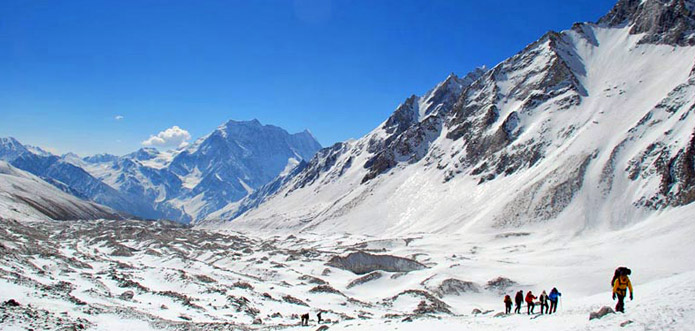How to Choose Your Destination
 The very first thing to do before
reaching India for your adventure, is to plan your entire trip in terms of itinerary,
duration of the trek, trip’s total budget, etc. If you are interested in
exploring ancient culture and monasteries, Little Tibet and Ladakh are the best
places to visit. For those who are interested in luxuriant forests, Sikkim
would be a nice place to explore.
The very first thing to do before
reaching India for your adventure, is to plan your entire trip in terms of itinerary,
duration of the trek, trip’s total budget, etc. If you are interested in
exploring ancient culture and monasteries, Little Tibet and Ladakh are the best
places to visit. For those who are interested in luxuriant forests, Sikkim
would be a nice place to explore.
Mountains lovers can explore a
myriad of beautiful Himalayan treks that offer some of the world’s best
mountain views. Irrespective of whatever trek route you choose, make sure you
allow plenty of contingency days owing to a number of things that can delay
your plan. Adventure tours in India can offer inclement weathers and demand a
day or two for acclimatization.
Also unnecessary delays from the
porter, who tend to disappear without any notice for a half day, can delay the
trip (Trust me I have gone through this). Some trekking tours also offer the
best trekking camps in India, so having extra days in hand will allow you to
savor some really fabulous traits of India’s best adventure treks.
Calculate Your Budget
If you are trekking via a trekking
agency, keeping money in hand for tips is advised, which will add up to about
105 of the total trek cost. In case you are planning everything personally, to
avoid financial difficulties, it is best to calculate the cost of
accommodation, food, cost of guides and porters and transportation. Double the
amount you have calculated as this will cover all other unexpected costs that
seem to occur for sure, whenever you are out on a tight budget.
The Right Season to Trek
The peak trekking seasons in India
are from March reaching out to June. Even though this season is considered to
be the best for trekking on various Indian trek routes, however it is best to
stay aware of the weather at all times. Especially if choose a trek route in
the Himalayas, the weather in this part is very unpredictable and even
experienced trekkers seem to find themselves in a tricky situation.
July and August should be avoided
owed to heavy monsoons. The Indian region of Himalaya’s face a very cold winter
season spread from November to March and abstaining from adventure trekking in
India is a good decision.
 Safety A Top Priority
Safety A Top Priority
Having even the most perfect
equipments (GPS, maps, etc) cannot guarantee your safety on high locations,
especially in the Indian Himalayas. Even the best of GPS and the most
intricately detailed maps cannot help you find the way in remote areas, so
hiring an expert guide should be considered a must.
Having All Essential Gear
The essential gear list, like in
any trip, need to be designed according to the location of the trek. Clothes,
trekking boots, socks, mid layer and insulated jackets, rain/wind jackets,
trekking pants, underwear, trekking poles, gloves, sunglasses, water bottle,
towel, hand torch, sunscreen, moisturizer, toiletries, water purification
tablets, first aid kits, sleeping bags, and camera are some of the essentials
to bring along. For further details on a specific area gear guide, refer to
other posts on adventure trekking in India.
No comments:
Post a Comment